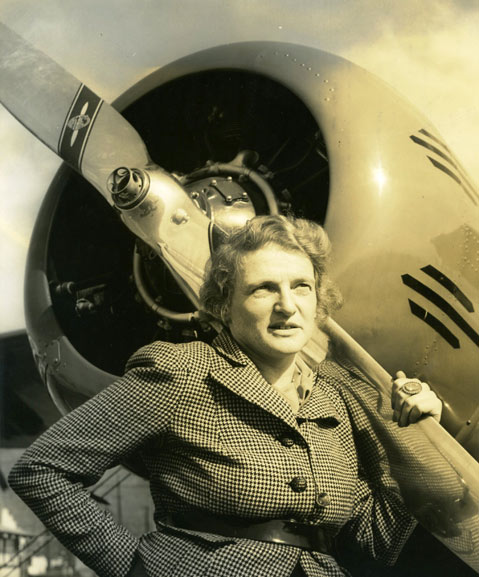Aviator Bessie Owen
Santa Barbaran One of America's Outstanding Aviators
Bessie Owen was one of America’s pioneering aviatrices. Owen became nationally known when her account of her globe-trotting escapades, Aerial Vagabond, hit the bookstores in 1941.
Owen was born into a wealthy San Francisco family in 1896. Although she grew up in the sheltered world of finishing schools, she nevertheless had a thirst for adventure even as a young girl. Her fascination with airplanes was confirmed in 1924 after she took a flight over the English Channel in an open-cockpit plane. From that moment forward, she was determined to learn to fly.

She answered an advertisement in a San Francisco newspaper and paid $100 for lessons. The class first engaged in ground training; the students had to put together their own plane from the spare parts of an old Jenny. Owen then ran into a roadblock. When she applied for her pilot’s license, the agency refused to certify her due to poor eyesight. Owen was not about to let this deter her. She spent a period of time flying without a license and dodging authorities until regulations changed and she got her certificate. Owen eventually would earn a commercial pilot’s license.
Owen joined the first organization of licensed women pilots in the United States, the 99 Club, so called after the number of the organization’s charter members. Amelia Earhart was a cofounder, and Owen and Earhart became close friends. Owen also befriended Francis Noonan, who lived in Santa Barbara for a time. Noonan was Earhart’s navigator on the ill-fated 1937 flight, when the two disappeared over the Pacific Ocean.
Owen began to make roundtrip flights of ever-longer distance from her new home in Santa Barbara: San Francisco, Mexico City, New York City. All of these were but preludes to her greatest flying achievement, a zig-zag flight of some 11,000 miles from Paris to China in 1935.
Owen spent months in painstaking preparation, arranging for fuel stops, gathering permissions and permits, and poring over maps to plan the route. The plane she chose for the adventure was a vermilion Waco biplane. In October 1935, she and the plane shipped off to Europe on a Standard Oil tanker.
Upon arrival, she spent time on practice flights over the Continent and Africa, becoming familiar with every characteristic of her aircraft. Then, she was off on her big adventure.
Owen never intended to set any endurance or speed records. Her wish was to see the world, and she often stopped for periods of time to visit with people. During her overflight of Germany, she took the first aerial photographs of the infamous Dachau concentration camp. She then had to hide the film from the Nazi authorities. In Southeast Asia, bad weather forced her to land. When she discovered the plane’s landing gear was too badly damaged for her to continue, she had to hack her way through miles of dense jungle to seek help.
Aerial Vagabond was a great success. One reviewer, in rather overwrought prose, called Owen, “a daring dame who didn’t know what the word ‘verboten’ meant.” She would receive decorations from a number of countries for her achievements. Upon her death in Mexico City in 1967, she was recognized as one of America’s outstanding aviators, as esteemed in some circles as her good friend Amelia Earhart.



